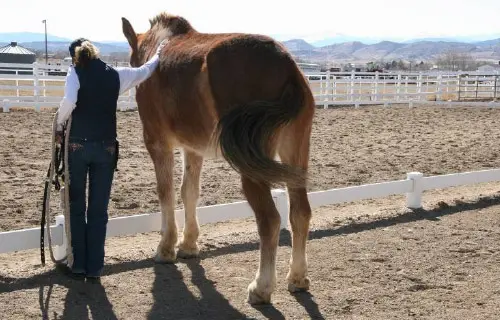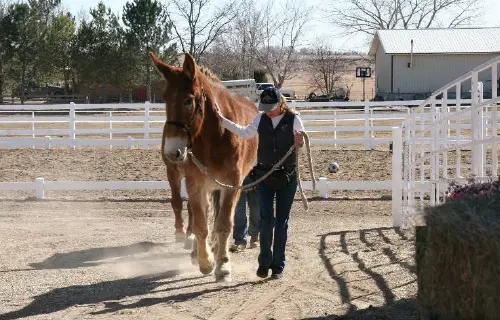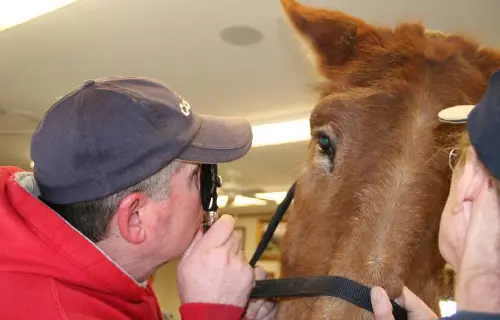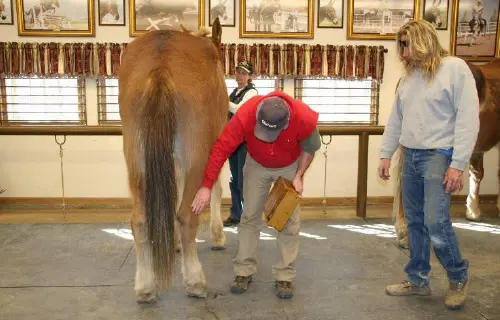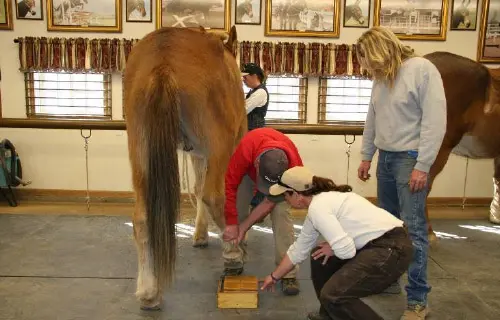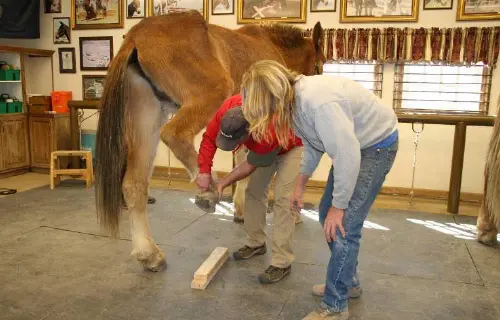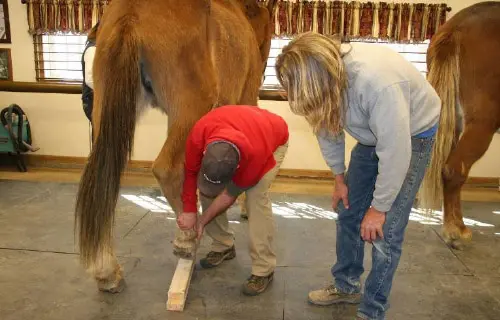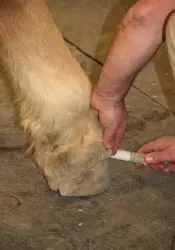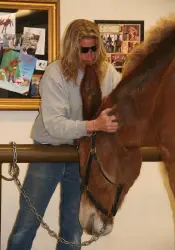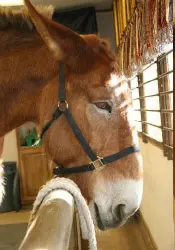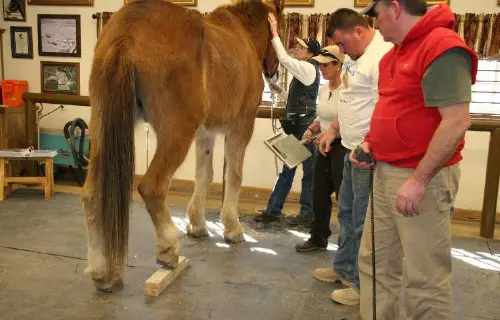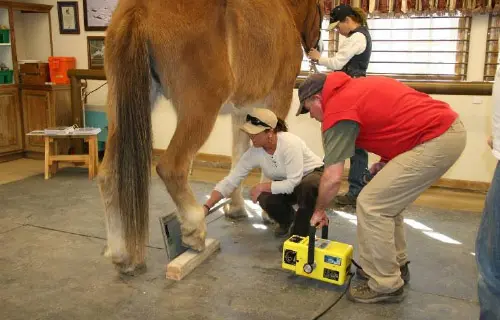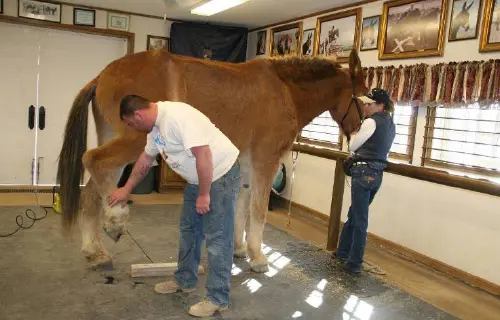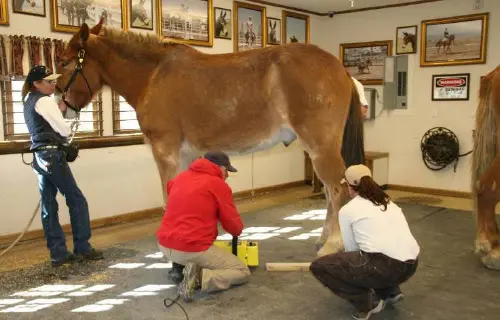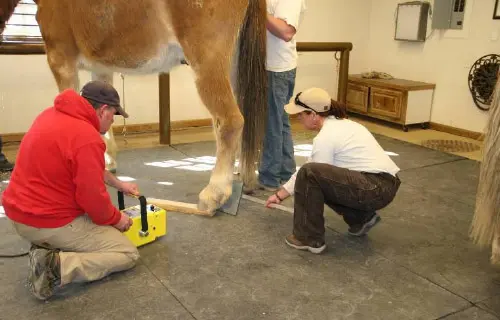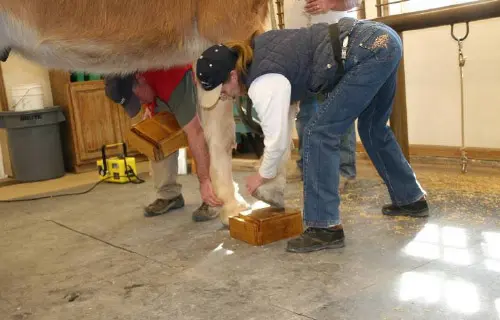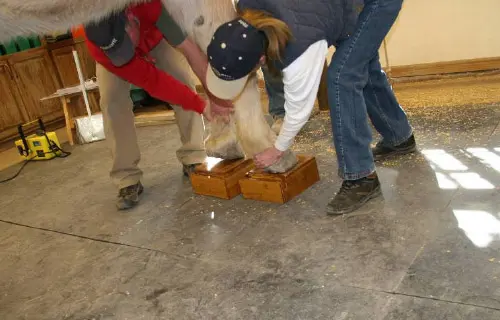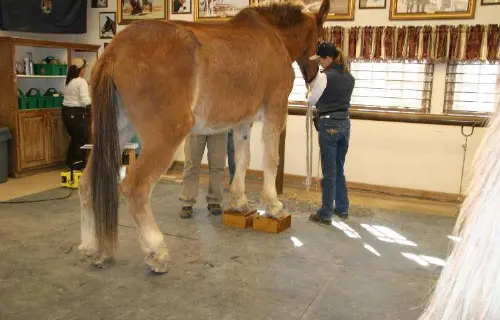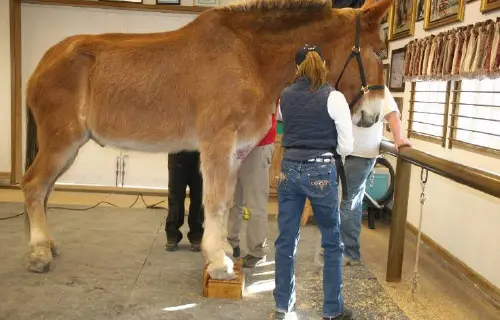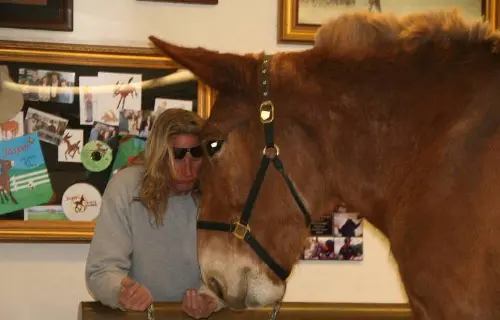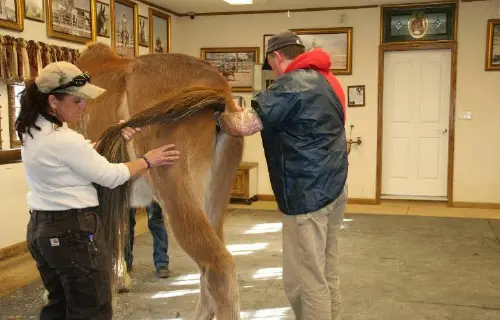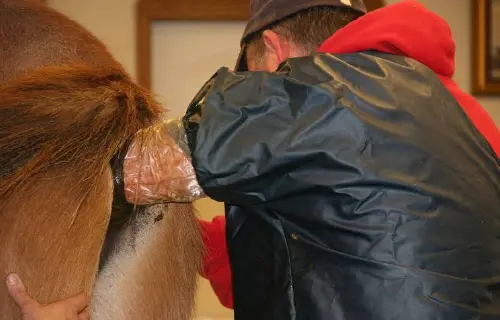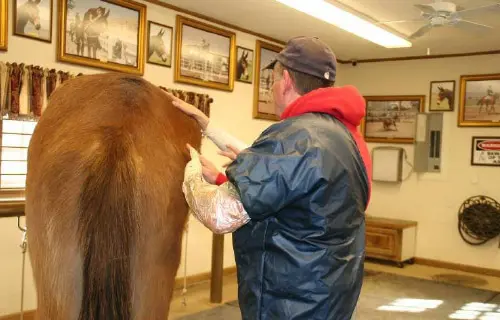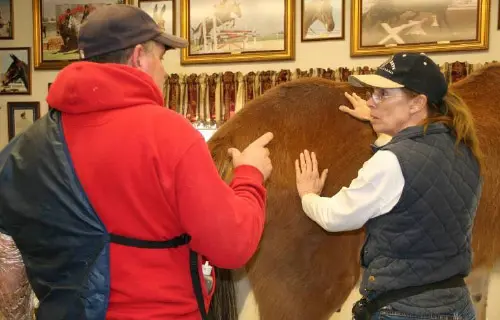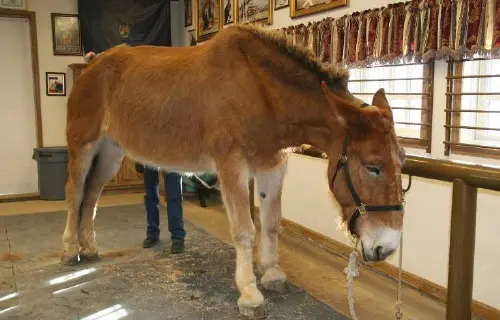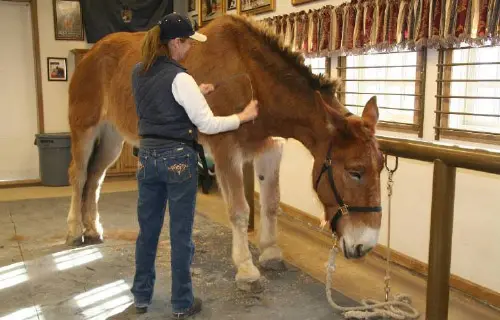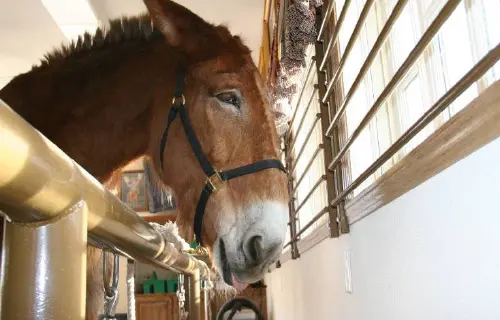2010 – Rock & Roll – 12-28-29-10 – MASSAGE
12/28/10: Dr. Greg Farrand checked Rock on his visit to the ranch and was encouraged by the way Rock was moving. He said he was sure he saw marked improvement in his gait and particularly in the right hind leg. He is tracking significantly more straight forward and the “hitch” is barely visible.
12/29/10: Rock had his fourth massage today with Joanne Lang and husband Dr. Dave Miller, DVM. First, we took the “before pictures shown below. His “before” stance is looking better and the “reach” of the right hind is improving. He is finally able to bear weight on the right hind leg through the turn.










Bearing weight on the right hind through the trot caused him to give a little “jump” and raise his head for a split second, but he then resumed an even pace. He never pulled on the lead rope and launched into the trot easily. Dave and Joanne then began their work on Rock and he was happy to comply. They worked much more of his body this time. Dave focused on the right hind while Joanne worked critical point throughout his body on both sides (see Joanne’s notes).
Rock was quite content to lower his head upon request and there was significant improvement over the topline. Rock is now reaching to the side by himself through the head and neck when standing free during the massage. He is finally gaining some flexibility through his head and neck. Rock has begun to put some weight against the tail pull which is what we want. To put more pressure on the rear end, we took him into his stall and Dave massaged his rump and then back with his feet (see Joanne’s notes) as Roll looked on. At first, Rock wasn’t too sure about what we were up to, but he stood quietly and all that showed any concern was his face. He did half heartedly try to step away from Dave, but to get a better angle on his glutes, we just repositioned him by backing him into Dave and again he was very cooperative.


Then we took him out to walk and trot again. When bearing weight on the right hind, the hip is noticeably higher on that side, but he is tracking much more forward. When his weight moves to the left hind, the hips are more level. His reach through the turn increased significantly. Trot is much improved!

































































































































































































































































































































































































































































































